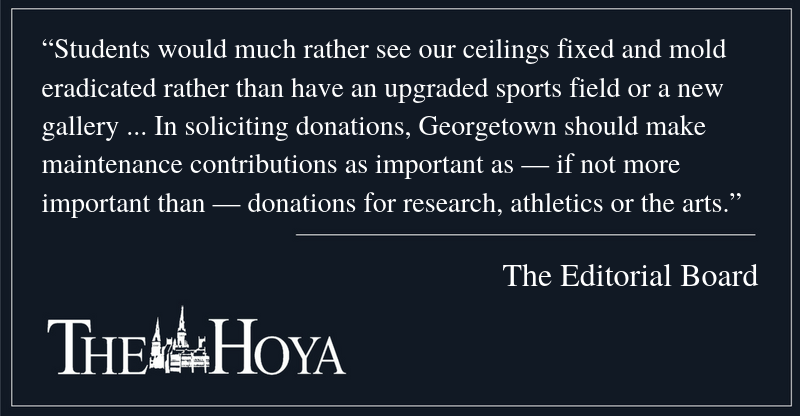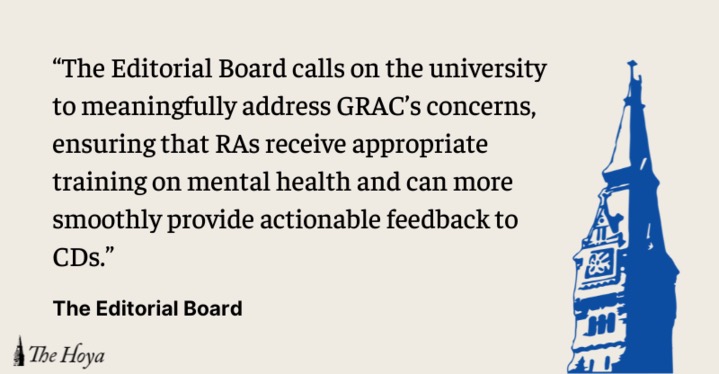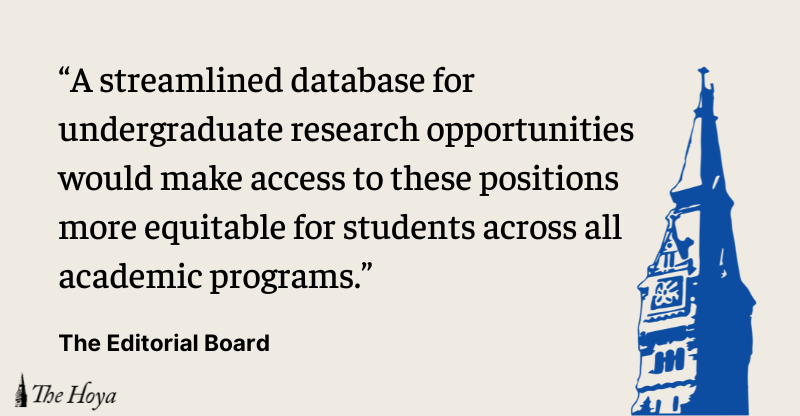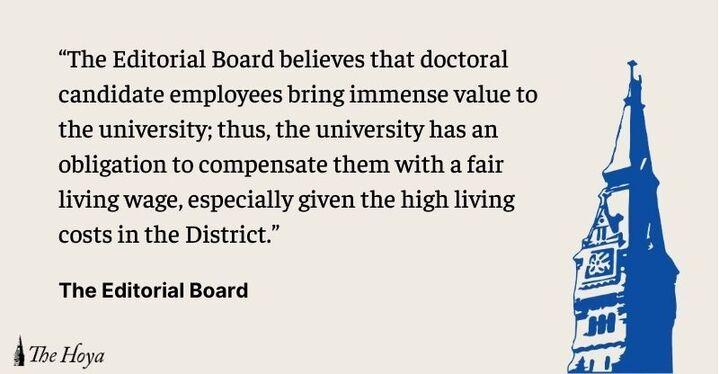As students on Georgetown University’s campus face constant health and safety hazards from crumbling infrastructure, pervasive mold and archaic lead water pipes, donations to the university continue to be directed toward luxury projects that do little to improve student life.
To better address student well-being, Georgetown should emphasize the importance of maintenance when soliciting donations, and university donors should strongly consider donating to improve infrastructure rather than to fund a shiny new building.
Last fall, repeated reports of mold caused health problems for students. In February, 85 top-floor residents of Alumni Square were relocated because of structural concerns. Just two weeks ago, graduate students reported that multiple buildings across campus contained elevated levels of lead in drinking water, including White-Gravenor Hall and the Office of Planning and Facilities Management.
Complaints about maintenance deficiencies that threaten student well-being are not a new phenomenon on campus. In 2010, The Hoya reported fire and floods across campus due to facilities issues. Since then, infrastructural problems have only worsened.
In the meantime, however, alumni and parent donors have funded renovations and new buildings, including the Maria & Alberto de la Cruz gallery, which opened in 2018, and the ongoing Cooper Field renovation after a $50 million donation from the Cooper family.
On the other hand, the university’s board of directors approved $75 million over five years for deferred maintenance in February, taking a belated and lackluster step in alleviating infrastructure issues.
“Investments in new facilities are much more appealing than renovations and maintenance,” university spokesperson Rachel Pugh wrote in an email to The Hoya in February 2018. “As a result, we tend to focus our fundraising efforts on new building projects and rely on university resources to address other needs.”
While high-profile construction donations are understandably more attractive to donors, Georgetown should emphasize to donors the importance of campus maintenance. If Georgetown presents its maintenance and facilities struggles to donors, they may be more likely to contribute to funds that will increase infrastructural integrity and student safety.
Students would much rather see our ceilings fixed and mold eradicated rather than have an upgraded sports field or a new gallery. The pleas from students for a safer campus should be heard by donors, and the Office of Advancement, the body that manages donations, should amplify our voices.
Currently, Georgetown Giving’s website offers a wide range of causes to which donors can contribute, including campus ministry, undergraduate financial aid and research programs across schools. But the website makes no mention of maintenance-related donations and neglects to encourage donors to contribute toward infrastructural maintenance.
In soliciting donations, Georgetown should make maintenance contributions as important as — if not more important than — donations for research, athletics or the arts. Students must be able to live and study in a mold-free and lead-free campus before they can perform to their full potential as researchers, athletes and artists.
Instead of pursuing more glamorous but less impactful new projects, donors, many of whom are alumni and parents of students, should recognize the value of contributing to student well-being. Donors should read the numerous reports about inadequate facilities on campus and empathize with students who have suffered negative health consequences.
After years of documented facilities issues, Georgetown should more actively push for funds to address its crumbling infrastructure. The university and its donors cannot continue to pursue fancy new projects while students suffer substandard housing conditions.















Frustrated parent • Sep 25, 2019 at 9:21 pm
As much as we have to pay to send our student to Georgetown, I’m really disappointed in the housing facilities. I would think that our money would be providing some decently nice places for the students to live. The quality is almost embarrassing.
Illuminated Alum • Sep 24, 2019 at 7:50 am
How about the university redirect funds from all the ridiculous non-faculty positions and redundant or irrelevant programs that permeate this school. Alums give to what matters to them and not the students.
$100K here and there for idiot administrative roles sure add up quickly. Maybe challenge the university to do a better job managing its budget?
Lara A Ballard, SFS '91 • Sep 23, 2019 at 10:47 pm
It was the fall of 1987. My parents had driven me from our home in east Tennessee and were moving my belongings into my freshman dorm on the 2nd floor of New South. No one in my family had ever attended such an august institution as Georgetown. I had to take an Army ROTC scholarship to pay for tuition, and even with that, my father told me, the cost of room and board at Georgetown exceeded what he would have had to pay for my entire education at a state school. My father was still tentative about this school. But I was thrilled. And then…we ventured into the women’s restroom and saw the black mold, all over the ceiling.
To this day, thirty-two years later, if you ask my parents to tell the story of what it was like to drop their oldest daughter off at college, one of the first things they will mention is the black mold. That’s the kind of impression Georgetown left them with. They will always remember it as an expression of disrespect–contempt, even–towards them and me, and the sacrifices we were all making to enable me to attend a good school. Georgetown couldn’t be bothered to clean the bathroom ceiling.
I not only support the ideas presented in this editorial, I hereby declare that I will *only* contribute financially to Georgetown *if* it is a fund earmarked towards dorm and building maintenance.